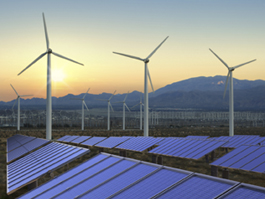News
|
A greener Europe through interconnected electricity grids
If you have seen the mural painting of Michelangelo "The Creation of Adam" in the Sistine Chapel you know that connectivity makes a difference. The same goes for electricity. When the grids are connected, new perspectives and possibilities arise. It is by building well-connected electricity grids in a joint European market that we all of a sudden can make renewables dominate. Investments in renewables will be made in areas where it is most windy, where the sun shines and where the cost per kWh is low.




